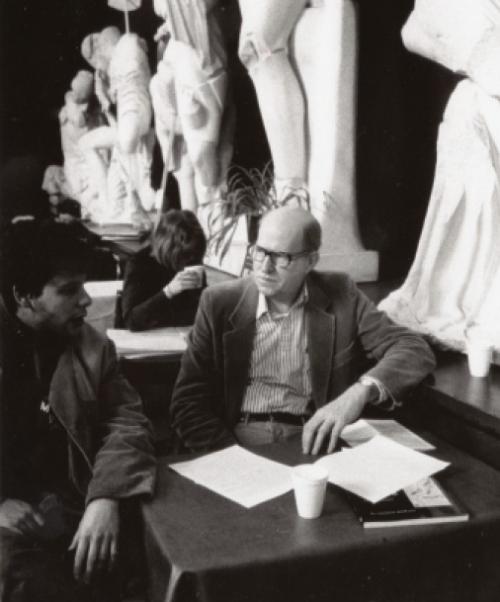Like generations of Cornell writers, I sat in the light of speech with poet and longtime English professor Archie Ammons morning after morning over coffee in the Temple of Zeus—first in the grand cavern that the café occupied on the left side of the Goldwin Smith lobby, later in the more modern but much diminished setting on the right, to which it was shifted in 1997. All of us who gathered with him there, a group that included fellow poets Phyllis Janowitz and Roald Hoffmann (who moonlighted as a Nobel-Prize-winning chemist), worried about how the move would affect Archie, whose verse was wildly adventurous, but whose daily habits made the word “routine” seem inadequate. We tried to cheer him up by surreptitiously scattering dimes on the floor—Archie, who had grown up on a North Carolina farm during the Depression, was never happier than when he discovered lost change—and by showing up as early as we could each day. He was always there first.
Archie—known to the world of letters as A.R. Ammons, two-time winner of the National Book Award and one of the first MacArthur “genius” grant recipients—was always there first with his writing, too. The full scope of his literary innovation is on display in The Complete Poems of A.R. Ammons, published in December by W.W. Norton & Company. Over the course of two volumes—more than 2,000 pages and nearly 1,000 poems—readers can trace the evolution of his work from early efforts to bridge the philosophical and colloquial in his first collection, Ommateum with Doxology (1955), to the sprawling book-length poems for which he may be best known: Tape for the Turn of the Year (1965), Sphere: The Form of a Motion (1974), Garbage (1993), and Glare (1997). As critic Helen Vendler writes in her sweeping introduction: “A voice of the rural South, modified by scientific modernity, observant and sardonic, he sounds like nobody else, his idiosyncrasy inimitable.”
Continue reading the full story in the Cornell Alumni Magazine.




